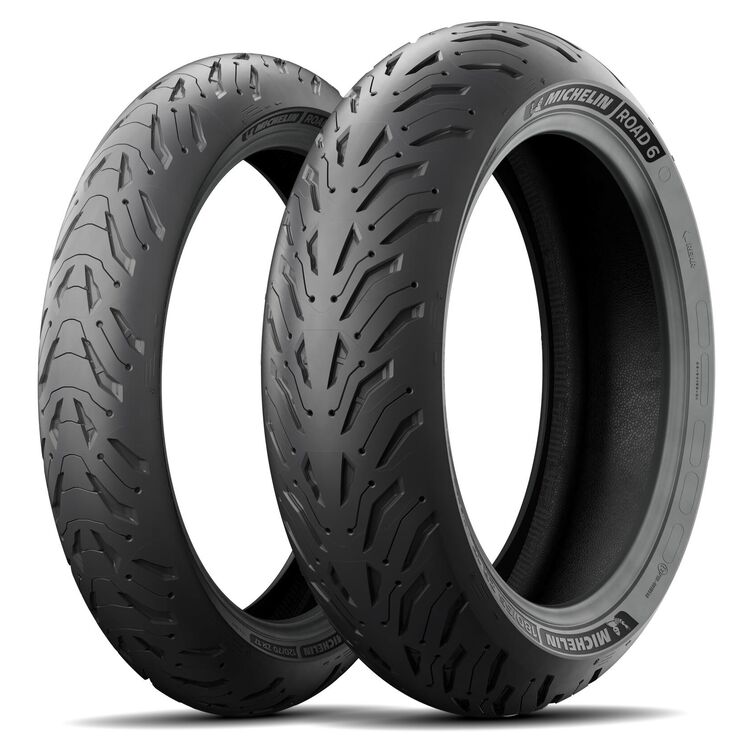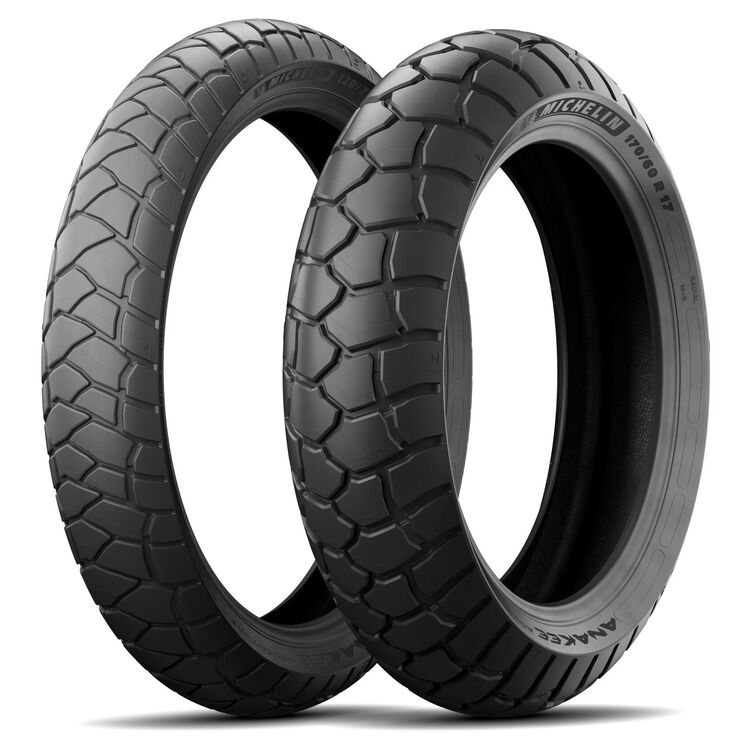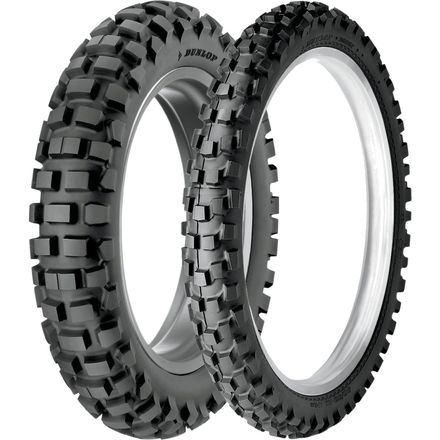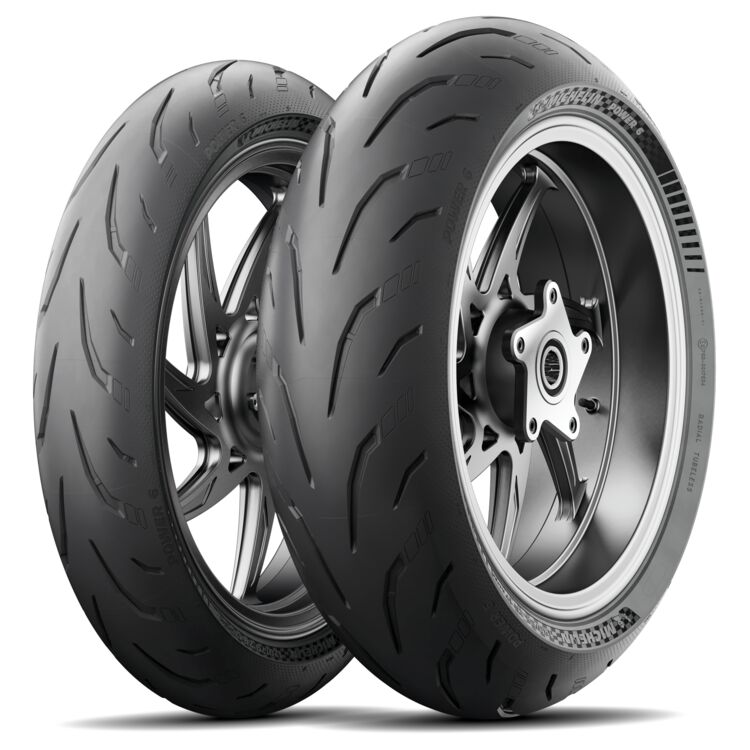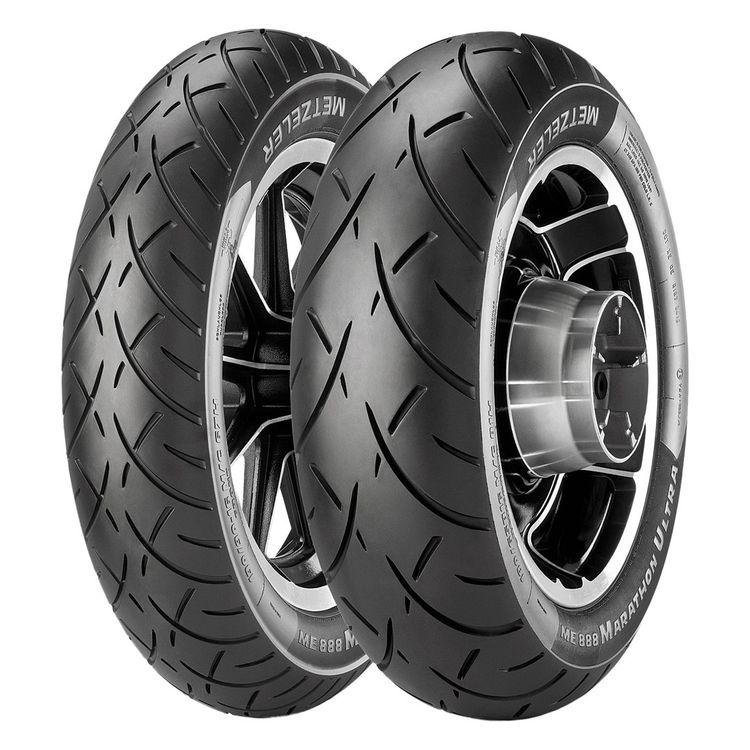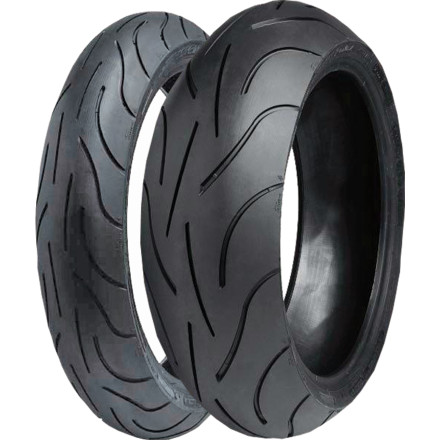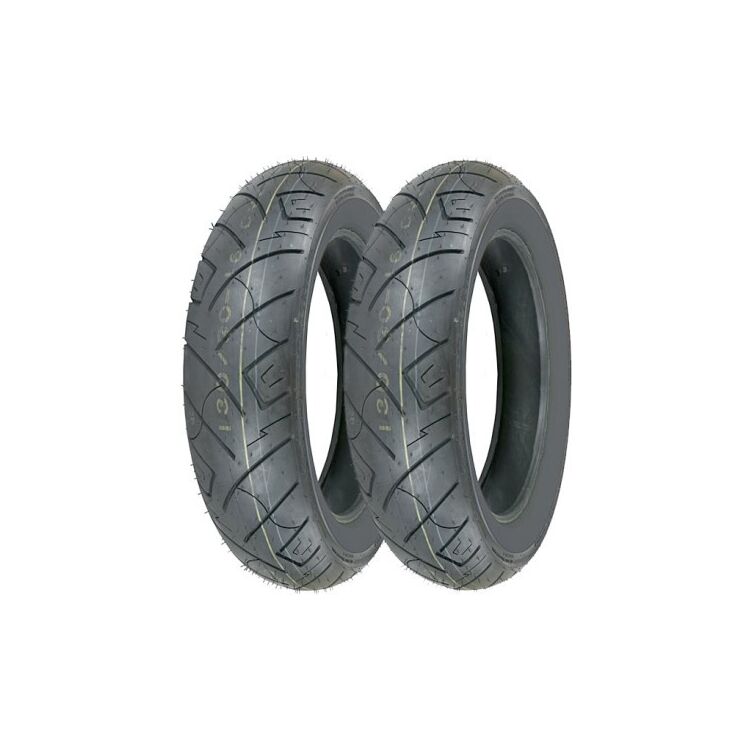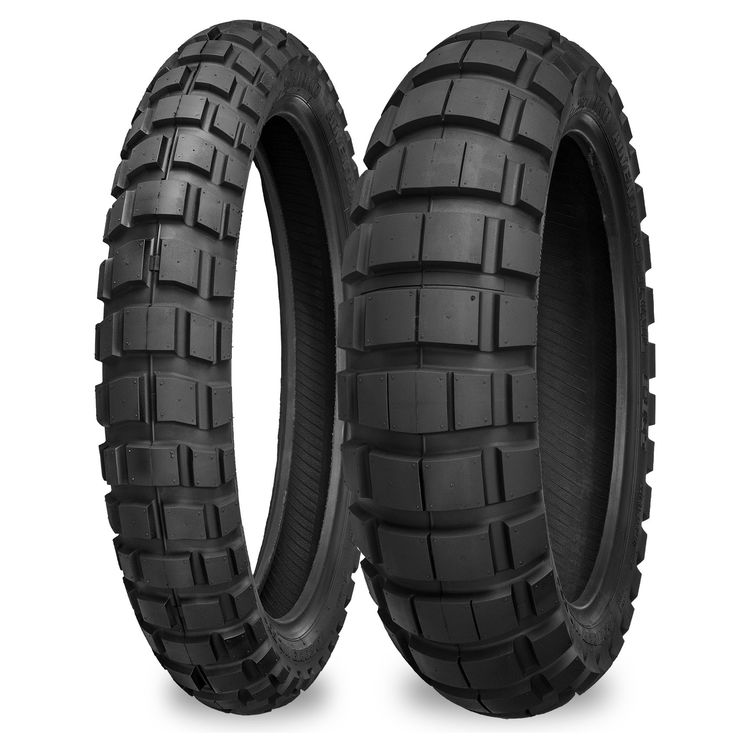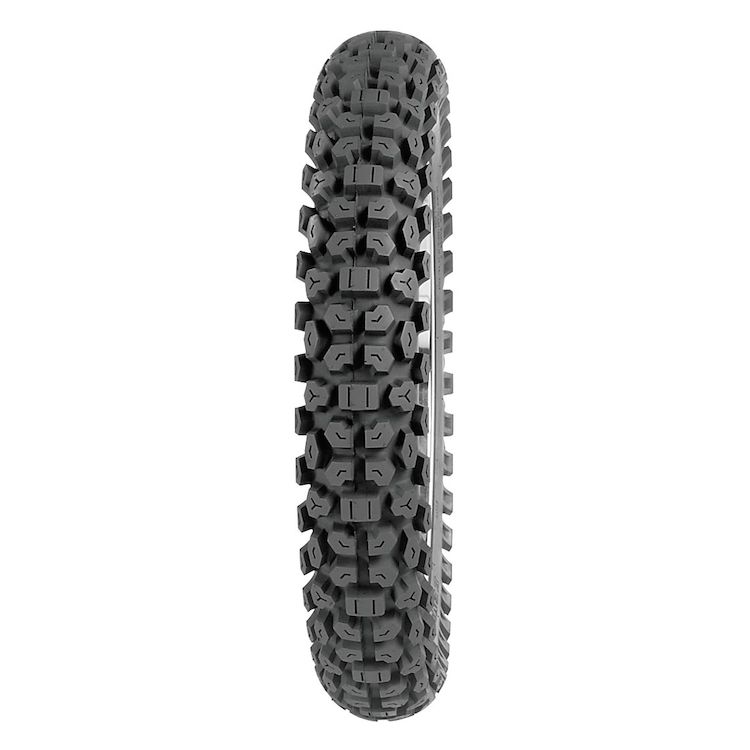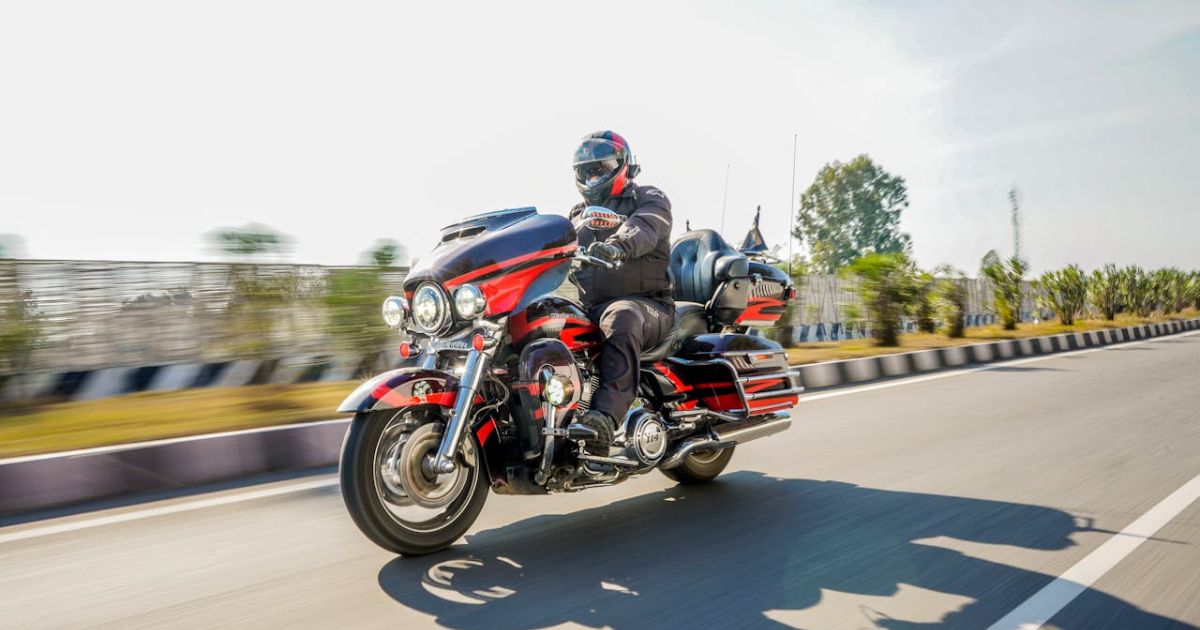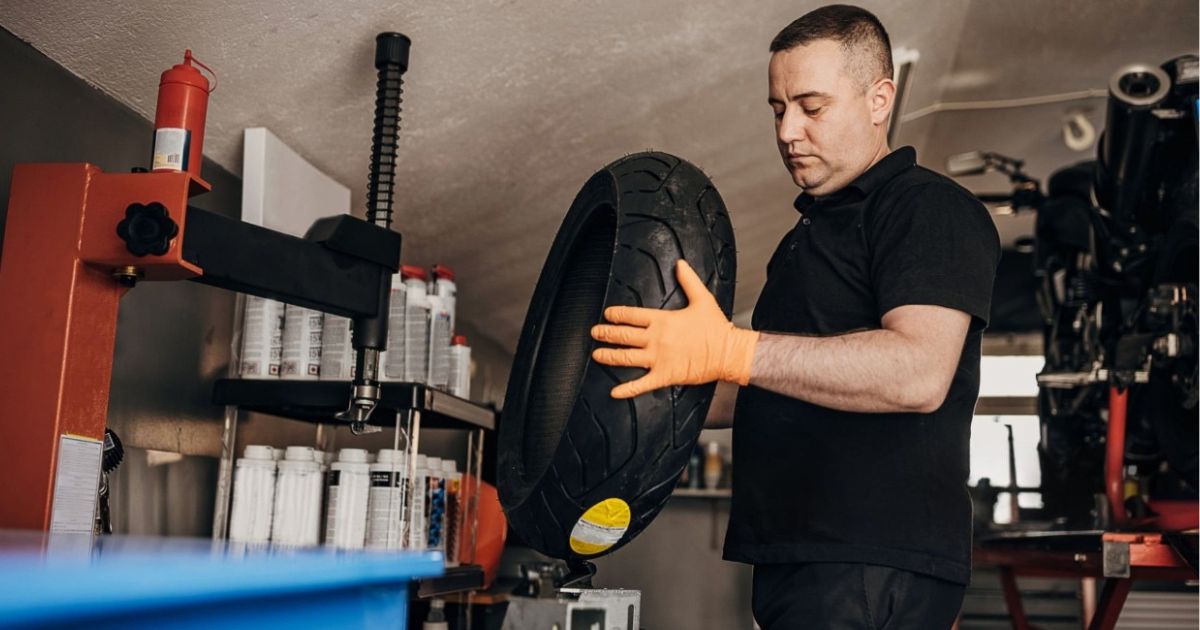
Best Motorcycle Tires for Street, ADV, and Dirt
left for contents
If you just got into riding, here’s what most people won’t tell you: bad tires make a good bike feel like junk.
Doesn’t matter how fast it is or how new it looks, if the rubber’s wrong, the whole ride suffers. Sloppy in corners, sketchy in the rain, weak on the brakes. Nine times out of ten, it’s not your skills. It’s your tires.
Good tires change everything:
- You’ll feel way more planted in corners
- No more puckering up every time it rains
- Braking feels sharper and more predictable
- The whole bike just feels “right” again

Source
I’ve seen riders chase down problems with suspension, brakes, even trade in their bikes. More often than not, a solid set of tires sorted it.
This is the kind of advice I’d give a buddy. Just solid tire picks that make sense for your bike and how you actually ride.
One more thing: Good tires can’t carry a neglected bike. Make sure you’re rolling with a healthy motorcycle battery so the thing fires up and solid motorcycle suspension to help those tires grip like they’re supposed to. It all works together.
Time to get a grip and choose the rubber that’ll keep your shiny side up.
The Top Tire Picks for Every Surface
You don’t need to be a tire engineer to pick a great set of hoops. Below are our best picks across Street, Adventure, and Off-Road riding. These tires are proven to deliver performance and confidence.
Before picking your next set, make sure you’ve got the basics covered:
✅ Check your owner’s manual for stock tire sizes
✅ Look at your current tire sidewalls (e.g., 120/70ZR17)
✅ Confirm front and rear tire sizes separately
✅ If you’ve swapped rims, double-check rim width and clearance
✅ Use a fitment tool on RevZilla, Cycle Gear, or Michelin.
Looking for solid budget options? Scroll down, we cover those too.
The benchmark in sport-touring. Exceptional wet and dry grip, impressive mileage, and confidence-inspiring handling for a massive range of street bikes. | Superb on-road manners with genuine capability when the pavement ends. Great for ADV bikes that see a mix of tarmac, gravel, and light trails. | A hardcore, DOT-legal knobby that offers tenacious grip in serious off-road conditions while still being manageable for short street stints to connect trails. |
|
|
|
|
|
|
The benchmark in sport-touring. Exceptional wet and dry grip, impressive mileage, and confidence-inspiring handling for a massive range of street bikes.
- Outstanding wet traction for safety in rain
- Long‑wearing tread—10%+ longer than predecessor
- Stable, confidence‑boosting handling at lean
- Smooth and linear turn‑in thanks to refined profile
- Slightly less agile than ultra‑sport tires
- Some riders report occasional instability on select bikes
Superb on-road manners with genuine capability when the pavement ends. Great for ADV bikes that see a mix of tarmac, gravel, and light trails.
- Excellent wet and dry pavement grip, even at lean
- Stable, confidence‑inspiring steering in varied conditions
- Durable wear—many report 8k–20k miles before replacement
- Comfortable and quiet for a mixed‑terrain tire
- Front tire can remain noisy during break‑in
- Not suited for deep mud or soft sand conditions
A hardcore, DOT-legal knobby that offers tenacious grip in serious off-road conditions while still being manageable for short street stints to connect trails.
- Excellent grip on loose dirt, sand & gravel
- Stable handling even under hard cornering
- Durable tread holds up through aggressive trail riding
- DOT-legal for pavement connections wherever you ride
- Wears relatively quickly on pavement
- Can feel unstable (wobble) at speeds above ~75 mph
Looking for something more specific to how you ride?
The table above covers the top picks for most riders, but if you fall into one of these more specialized camps, we’ve got top-tier choices below tailored just for you (click on the link to go to review):
- 🏍️ ADV riders looking for real 50/50 capability → Shinko 804/805 Big Block
- 🇺🇸 V-Twin riders touring long miles → Metzeler ME888
- 🏁 Sport riders chasing grip and agility → Michelin Power 6
Scroll down to the detailed reviews for each and find the rubber that fits your ride style best.
Before You Roll Out: Common Myths About Motorcycle Tires
Tire choice is riddled with old wives’ tales and forum “wisdom.” Let’s clear the air on a few common myths.
“Harder compound tires always last longer.” While generally true, it’s not the whole story. Tire construction, profile, and the use of dual-compounds (harder center for mileage, softer shoulders for grip) play huge roles. A poorly designed hard tire might still wear unevenly or offer scary grip.
“You must always replace tires in pairs, and they must match.” It’s highly recommended to replace in pairs and use matched tires (front and rear designed to work together) for optimal handling. However, sometimes only one tire is damaged/worn. If replacing a single, try to match the existing tire or at least use one with compatible characteristics. Mixing radically different types (e.g., a sport front with a knobby rear) can lead to unpredictable handling.

Source
“If a tire is DOT approved, it’s good for any street bike.” DOT approval just means it meets minimum legal standards for street use in the US. It doesn’t guarantee it’s the right tire for your specific bike (e.g., a DOT knobby is legal, but terrible for a sportbike on asphalt) or riding style in terms of grip, load capacity, or speed rating.
“You can tell how much life a tire has left just by looking at the tread depth in the center.” Center tread depth is important, but tires also age out (rubber hardens, cracks), can get squared off (affecting handling), or develop scalloping/cupping. Always check the date code and inspect the entire tire surface and sidewalls.
“Higher tire pressure gives better grip/mileage.” Only up to a point. Your bike manufacturer specifies recommended pressures for a reason – it’s a balance for safety, grip, and wear. Over-inflating can reduce the contact patch and make the ride harsh; under-inflating can cause overheating, poor handling, and rapid wear.
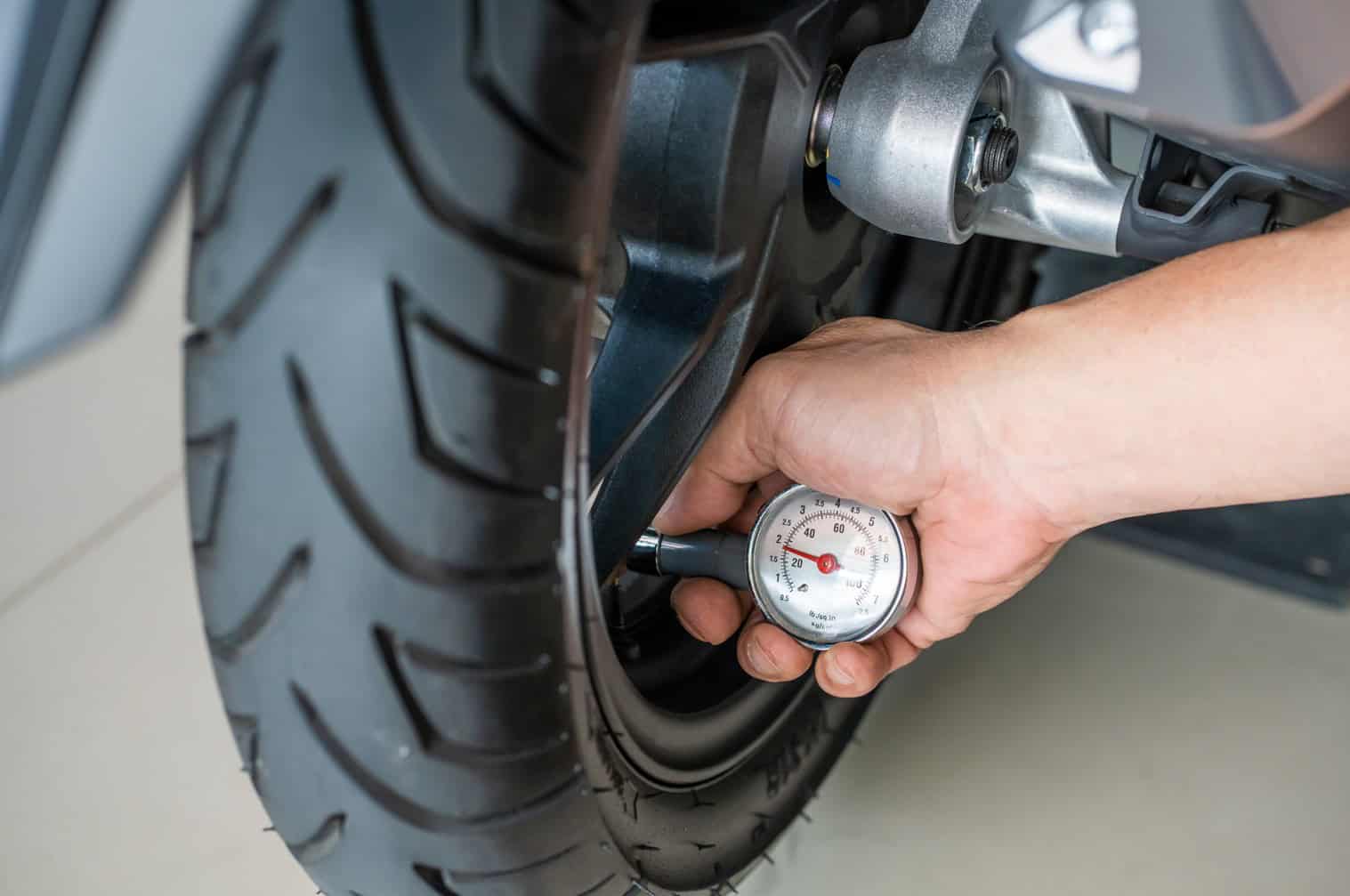
Source
Which Tire Tread Fits Your Ride?
Finding the right motorcycle tire means matching it to your bike, your primary riding surfaces, and your performance expectations.
Street Riding (Sportbikes, Nakeds, Cruisers, Tourers):
- Sport/Hypersport: Maximum dry grip, quick warm-up, often softer compounds for aggressive riding and track days. Mileage is secondary. (Think Pirelli Superbike Slicks for the track, though we’re focused on street-legal here).
- Sport-Touring: The all-rounders. Excellent wet and dry grip, stability, and good mileage for long distances and varied conditions. Ideal for most street riders.
- Cruiser/Touring: Focus on high mileage, stability (especially with heavy bikes), and comfort. Often designed for specific load capacities.
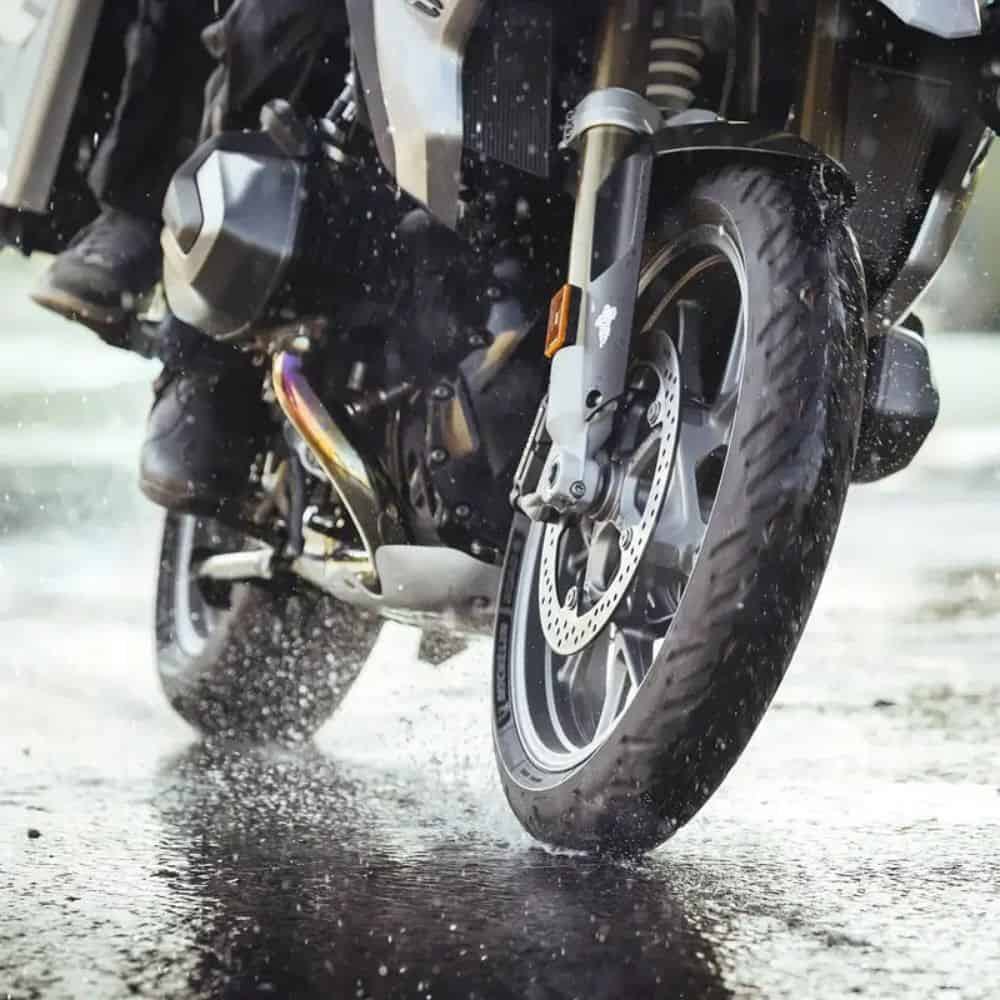
Source
Adventure (ADV) Riding (Mixed Surface): These tires need to perform reasonably well on pavement (long distances to reach trails) and offer predictable grip on gravel, dirt roads, and light to moderate trails. Tread patterns are a compromise – blockier than street tires, less aggressive than full off-road knobbies. Often rated by on-road/off-road percentage (e.g., 80/20, 50/50, 20/80).
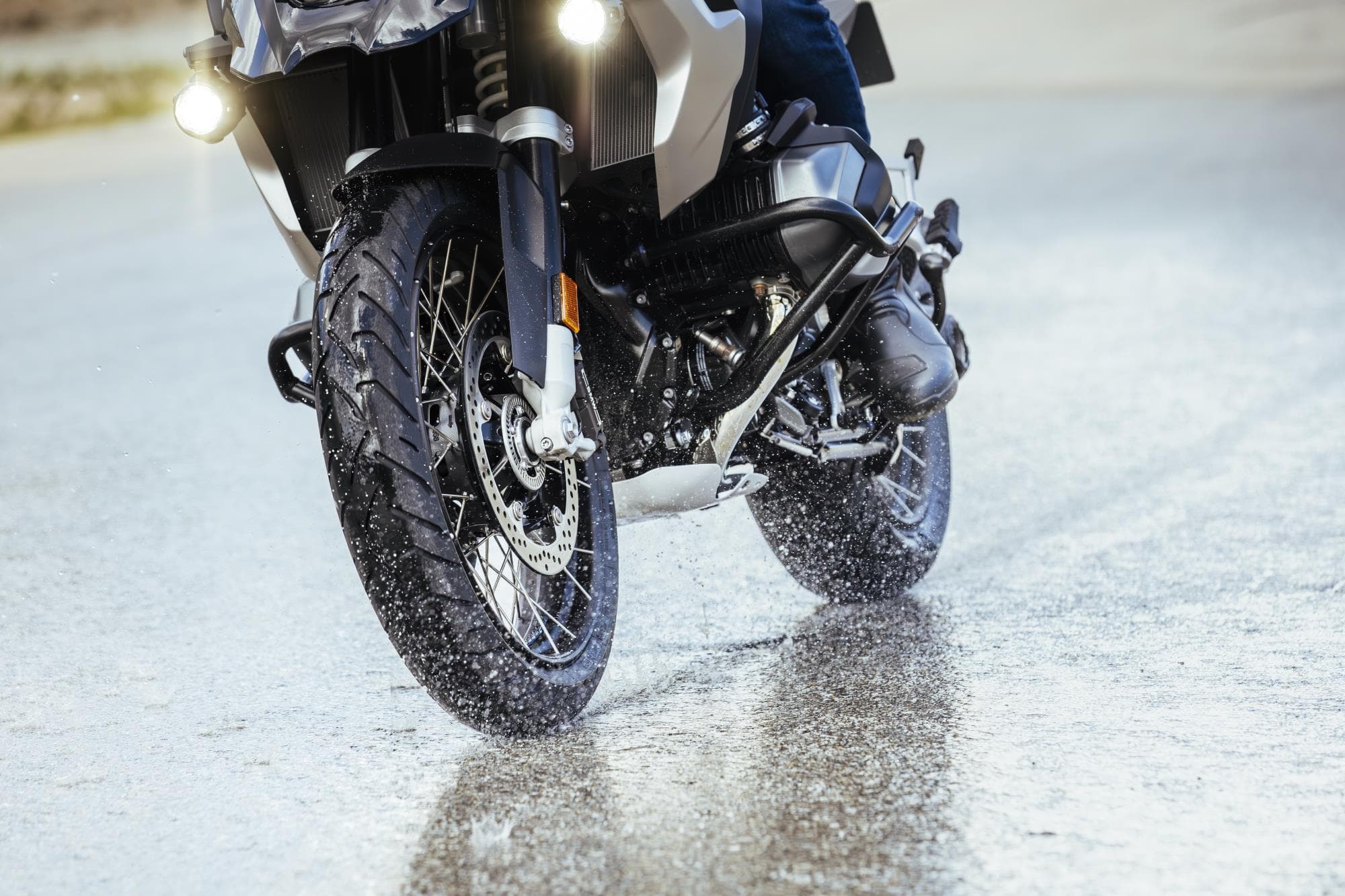
Source
Off-Road Riding (Dirt Bikes, Dual Sports on serious dirt): Maximum grip on loose surfaces (dirt, mud, sand, rocks) is paramount. Aggressive, tall, widely spaced knobs are characteristic. DOT-legal knobbies exist for dual-sports needing to connect trails via pavement, but on-road performance is heavily compromised. Non-DOT off-road tires are for trail/track use only.
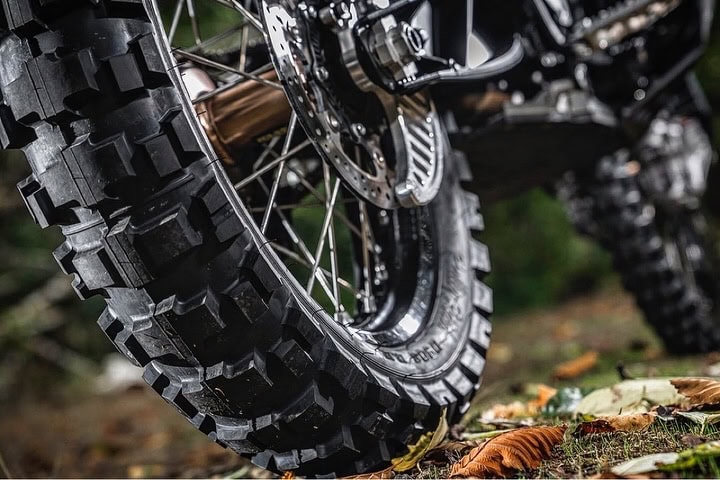
Source
With those fundamentals in mind, let’s break down the top performers in each category, followed by standout picks that deliver great value without cutting corners.
Top Tier Picks: What We’d Run First
When performance, longevity, and rider confidence matter most, these are the tires we’d trust. They’re our first-choice rubber for real-world road and touring miles, no compromises.
Michelin Road 6
The Michelin Road 6 is the latest evolution in a legendary line of sport-touring tires, and it lives up to the hype. It’s designed for riders who do a bit of everything on the street – commuting, weekend blasts, long tours – and demand exceptional performance, especially in the wet. Michelin’s 2CT+ technology (dual compound front and rear) provides durability in the center for mileage and softer shoulders for outstanding cornering grip.
The new tread pattern and silica-enhanced compounds offer even better wet grip and longevity than its highly acclaimed predecessor, the Road 5. Riders report quick warm-up, confidence-inspiring stability, and a neutral, predictable handling feel across a huge range of bikes. If you need one street tire that can do it all, exceptionally well, the Road 6 is hard to beat.
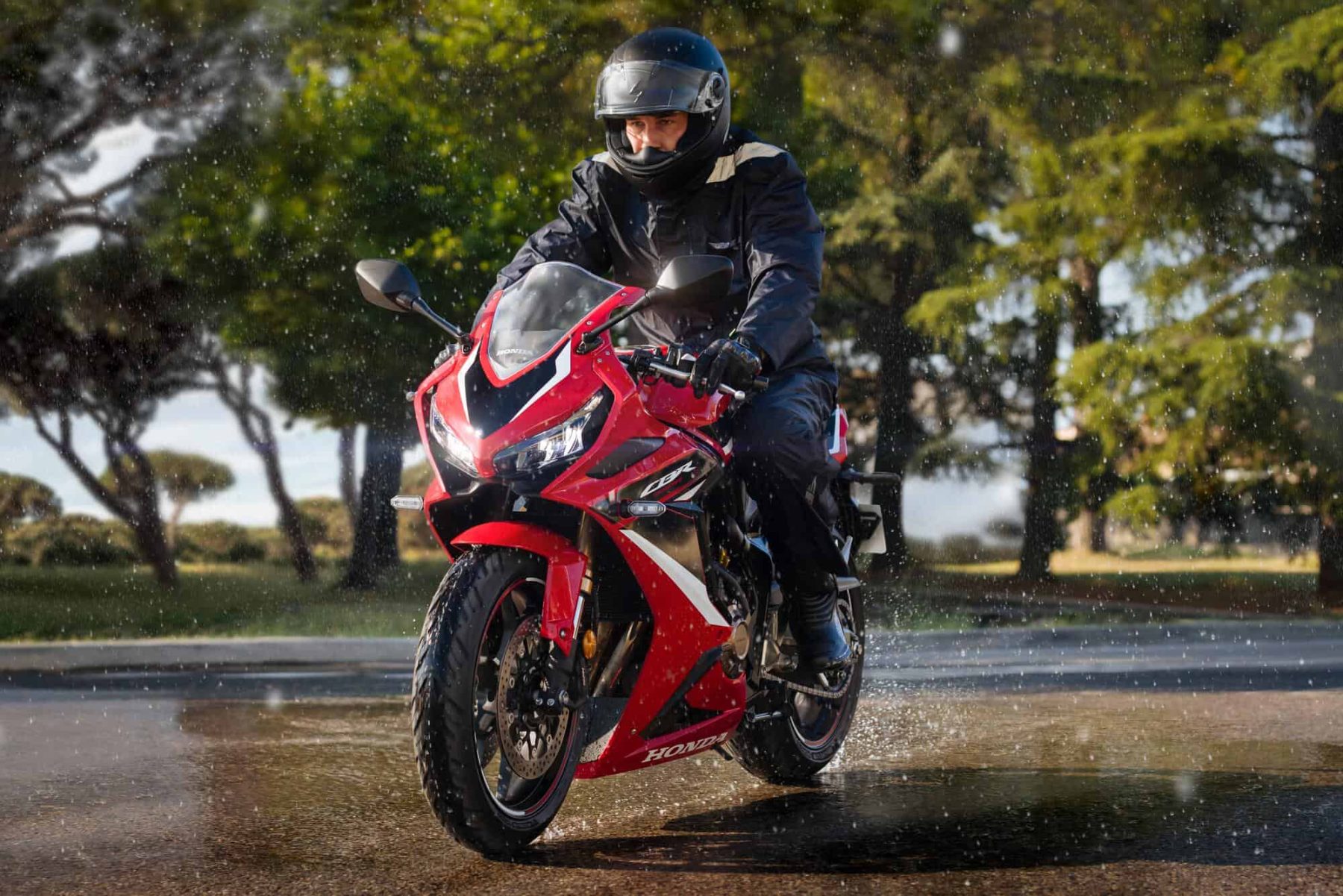
Source
The Catch? Premium sport-touring tires come with a premium price tag. They might be overkill if you only do short, fair-weather rides.
The Silver Lining: Class-leading wet and dry grip, excellent mileage for a sporty tire, and a feeling of unshakeable confidence in varied conditions.
Alternative Option: The Pirelli Angel GT II is another top-tier sport-touring tire renowned for its mileage and wet grip, offering a slightly different feel that some riders prefer.
A sport‑touring tire delivering exceptional wet and dry grip with excellent longevity—ideal for riders who want predictable, confidence‑inspiring performance on the street.
- Outstanding wet traction for safety in rain
- Long‑wearing tread—10%+ longer than predecessor
- Stable, confidence‑boosting handling at lean
- Smooth and linear turn‑in thanks to refined profile
- Slightly less agile than ultra‑sport tires
- Some riders report occasional instability on select bikes
Our Rating 4.7/5: The Road 6 delivers a clear upgrade in wet grip, comfort, and control over the Road 5. It holds traction in sketchy conditions, absorbs rough pavement better, and lasts longer than most sport-touring options.
Michelin Anakee Adventure
The Michelin Anakee Adventure is designed for the majority of ADV riders who spend a good chunk of their time on pavement but want reliable performance when they venture onto gravel roads and light trails (often cited as an 80% on-road, 20% off-road tire). It features Michelin’s 2CT and 2CT+ dual-compound technology for a balance of on-road grip, stability, and wear life.
The tread pattern offers good water evacuation and surprisingly good grip on asphalt, wet or dry, with handling characteristics that feel much like a dedicated street tire. When you hit the dirt, the blockier pattern provides decent traction on hard-pack and gravel. It’s not a hardcore knobby, but it’s more than capable for exploring unpaved backroads.
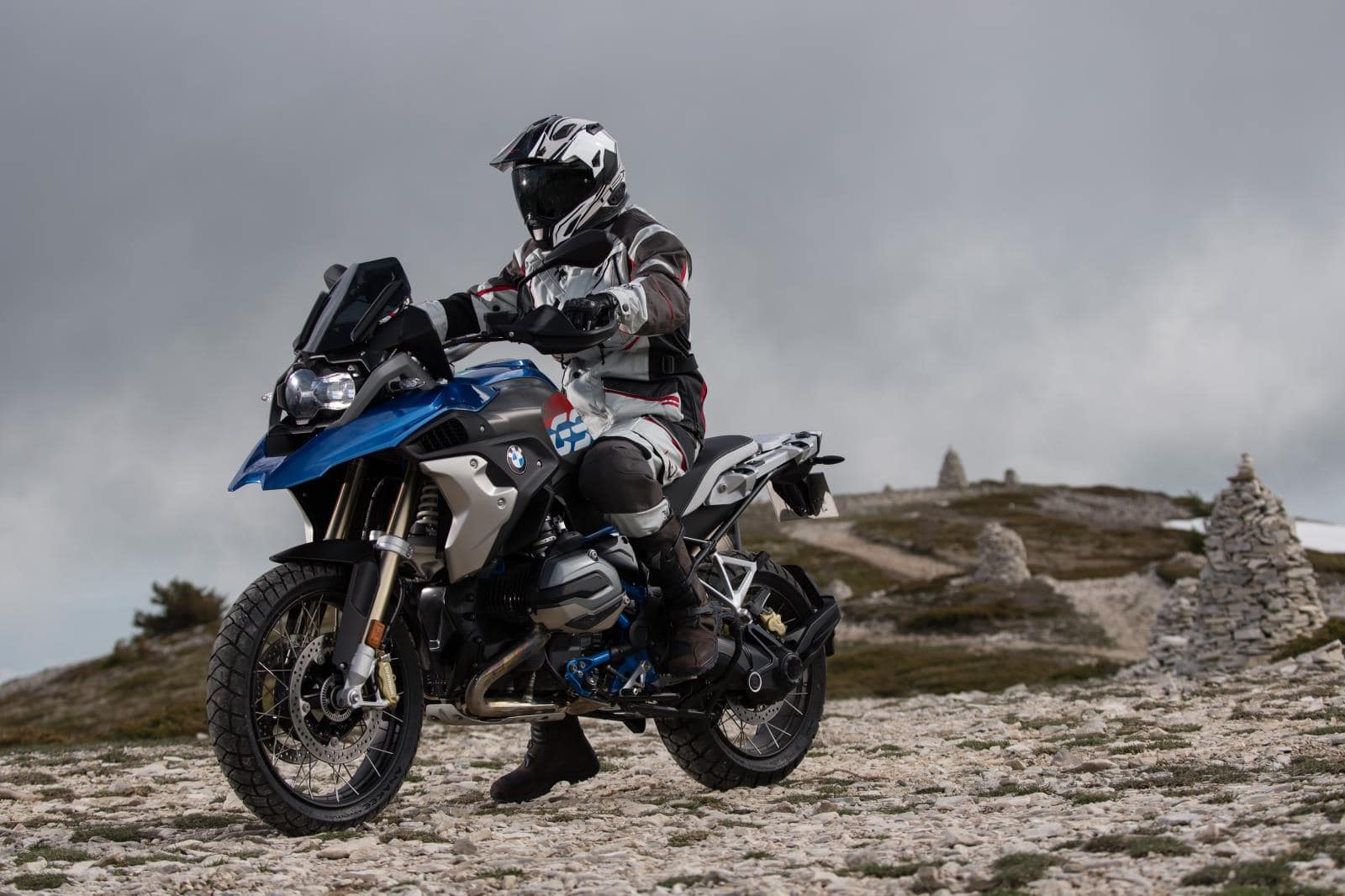
Source
The Catch? Not ideal for very muddy, sandy, or technical off-road conditions where a more aggressive knobby is needed.
The Silver Lining: Excellent on-road performance and comfort, combined with confidence-inspiring grip on gravel and dirt roads. A great all-rounder for most ADV bikes.
Alternative Option: The Continental TKC 70 Rocks offers a bit more off-road bite while still maintaining good road manners.
A versatile 80/20 ADV tire blending outstanding road stability, wet grip, and dirt capability—built for confident touring with occasional off-road use.
- Excellent wet and dry pavement grip, even at lean
- Stable, confidence‑inspiring steering in varied conditions
- Durable wear—many report 8k–20k miles before replacement
- Comfortable and quiet for a mixed‑terrain tire
- Front tire can remain noisy during break‑in
- Not suited for deep mud or soft sand conditions
Our Rating 4.5/5: The Anakee Adventure holds its own on the street: great grip, smooth at speed, and surprisingly planted in the rain. It’s not a dirt monster, but it’ll handle gravel and backroads without flinching. For an 80/20 tire, this one nails the balance.
Dunlop D606
When your adventures trend more towards serious dirt, mud, and rocks, but you still need to legally connect trails via pavement, the Dunlop D606 is a legendary DOT-approved knobby. This tire is heavily biased towards off-road performance (often considered a 90% off-road, 10% on-road tire). Its tall, aggressive knobs dig into loose terrain, providing excellent traction.
The D606 is known for its durability in harsh off-road environments. While street manners are compromised (expect noise, vibration, and reduced grip compared to street tires), it’s surprisingly capable for short road stints. A favorite for dual-sport riders tackling challenging BDRs or exploring remote singletrack.
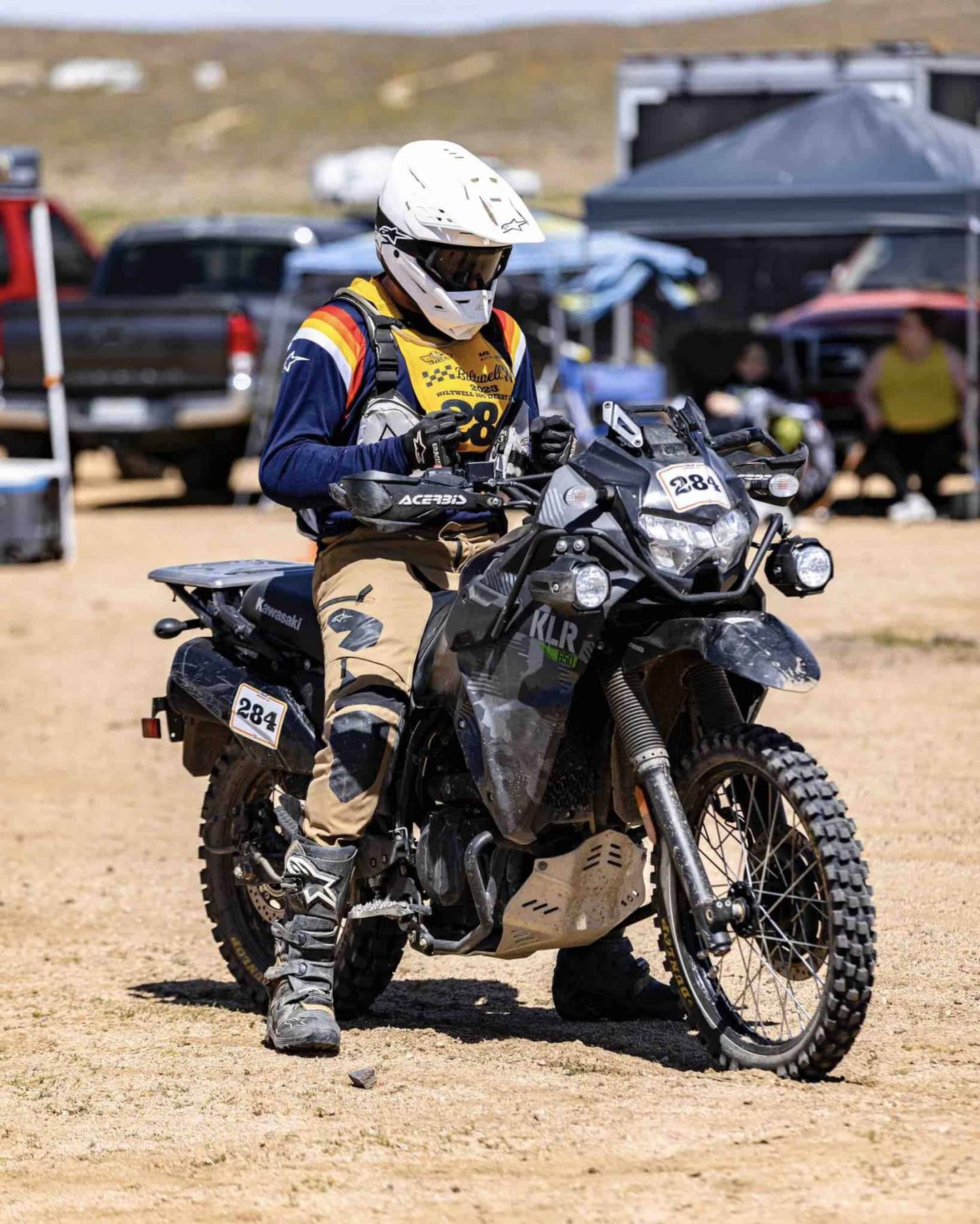
Source
The Catch? Poor on-road performance in terms of grip (especially wet), comfort, and noise. Wears relatively quickly on pavement.
The Silver Lining: Tenacious grip in a wide variety of off-road conditions. Durable construction. DOT-legal for street connections.
Alternative Option: The Pirelli MT21 Rallycross is another popular DOT knobby offering similar aggressive off-road performance.
A rugged DOT-approved knobby built for real trail work, the Dunlop D606 delivers tenacious off-road traction while still allowing short highway rides—perfect for dual-sport adventurers.
- Excellent grip on loose dirt, sand & gravel
- Stable handling even under hard cornering
- Durable tread holds up through aggressive trail riding
- DOT-legal for pavement connections wherever you ride
- Wears relatively quickly on pavement
- Can feel unstable (wobble) at speeds above ~75 mph
Our Rating 4.7/5: The D606 doesn’t mess around off-road, loose dirt, mud, rocks, it digs in and keeps moving. It’s loud and rough on pavement, but that’s the tradeoff for real trail traction. If you ride dual-sport and spend more time in the dirt than on it, this is the tire.
Michelin Power 6
Successor to the much-loved Power 5, the Michelin Power 6 is aimed at sportbike riders who demand high levels of dry grip, agile handling, and good feedback for spirited street riding and occasional track days. It uses advanced compounds, including Michelin’s 2CT+ technology, to deliver excellent cornering adhesion while maintaining reasonable stability and wear for road use.
The Power 6 is designed for quick warm-up and provides a very sporty feel, inspiring confidence when leaning the bike over. While it won’t last as long as a Road 6, its focus is on maximizing performance for riders who prioritize outright grip and handling agility on their sport machines.
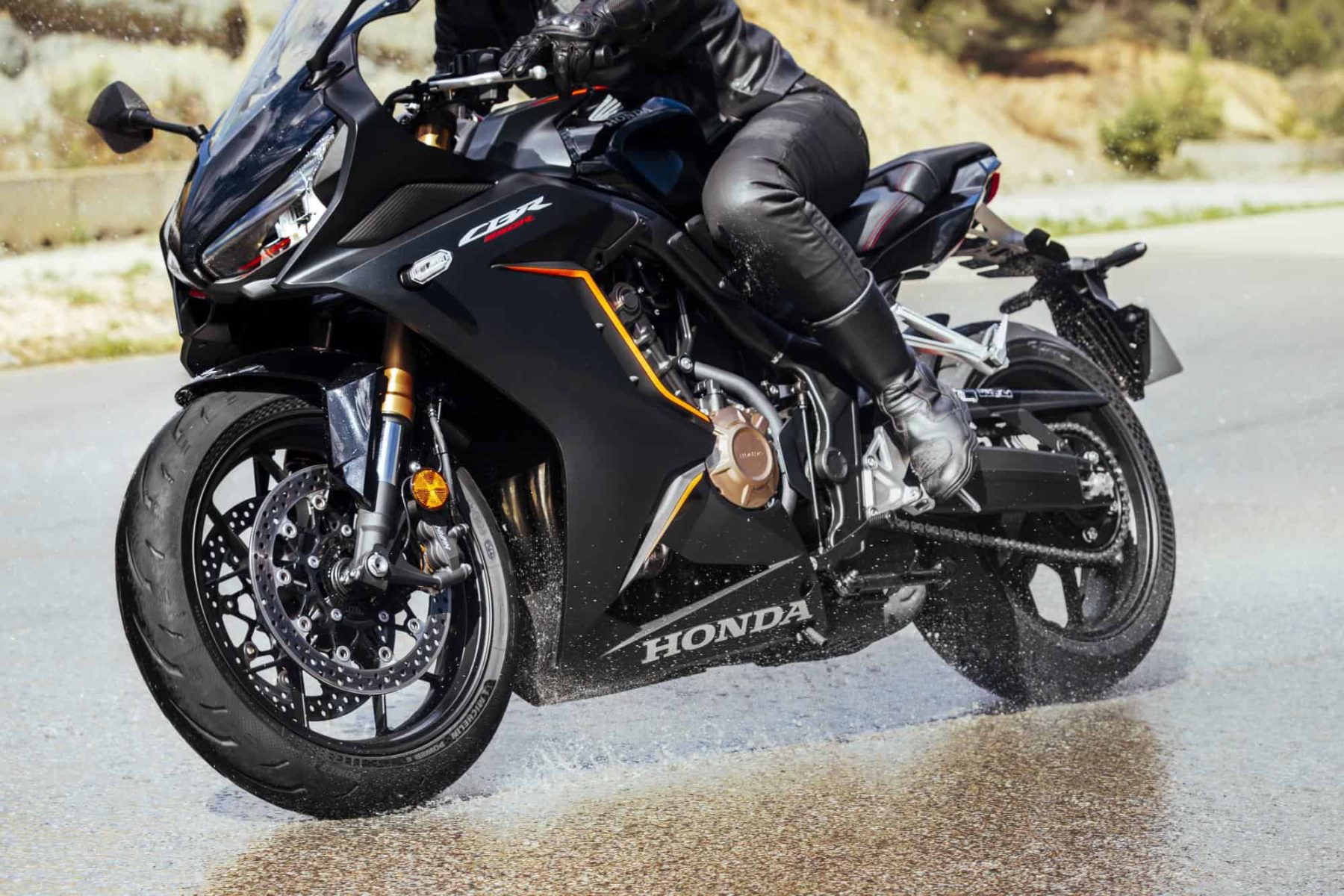
Source
The Catch? Shorter lifespan compared to sport-touring tires. Wet grip is good for a hypersport tire but not its primary focus like the Road 6.
The Silver Lining: Exceptional dry grip, very sporty handling characteristics, and quick warm-up for an engaging and high-performance street ride.
Alternative Option: The Pirelli Diablo Rosso IV (successor to the III) is a direct competitor, offering similar hypersport performance and feel.
A sport-focused tire offering exceptional grip, agile handling, and reliable durability—perfect for spirited street riding with occasional track use.
- Exceptional wet and dry grip with sticky traction
- Light, precise steering for confident cornering
- Durable tread—many track riders report 4k+ mi
- Smooth ride that absorbs road imperfections
- Ride quality isn’t as refined as touring tires
- Slightly stiff carcass may feel firm for some
Our Rating 4.8/5: The Power 6 is all about grip and feel. It heats up fast, stays planted in hard corners, and keeps things smooth at high speed. Not built for massive mileage, but if you want responsive, sport-focused rubber for the street, this one delivers.
Metzeler ME888 Marathon Ultra
For cruiser and heavy touring bike riders, mileage, stability, and comfort are paramount. The Metzeler ME888 Marathon Ultra is engineered specifically for these demands. Known for its impressive longevity, the ME888 uses a specifically designed tread pattern and compound to deliver high mileage without sacrificing competent wet and dry grip.
It provides a stable, comfortable ride, crucial for long days on big V-twins or heavyweight tourers. Available in a massive range of sizes, including specific versions for Harley-Davidson models (often with “Triple 8” branding), it’s a go-to for riders looking to rack up serious miles.
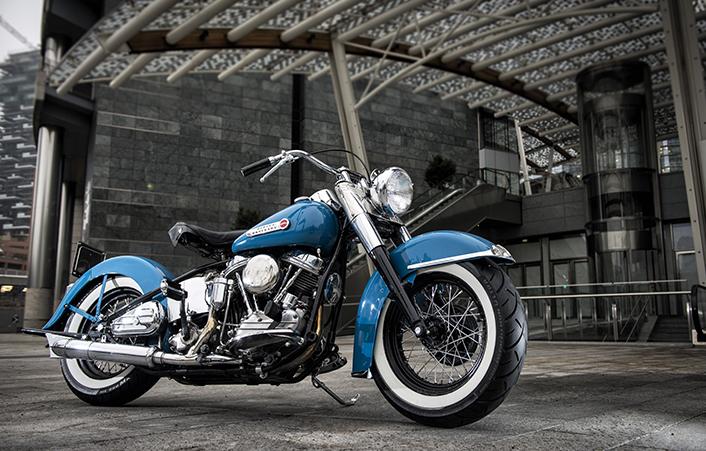
Source
The Catch? Not designed for aggressive, sporty riding. The focus is on durability and stability, not nimble handling or ultimate lean angles.
The Silver Lining: Exceptional tread life, excellent stability for heavy bikes, and reliable performance in various conditions. A true mile-muncher.
Alternative Option: The Michelin Commander III Touring is a top-tier choice for American V-twin riders looking for excellent mileage, smooth handling, and impressive wet-weather grip. It offers a more modern tread design than many competitors, with a reputation for consistent performance over the long haul.
A cruiser-focused touring tire engineered for exceptional longevity, wet grip, and highway stability—ideal for heavy bikes and long-distance rides.
- Outstanding tread life—rear tires reach 12k–19k miles
- Reliable wet and dry traction with secure handling
- Smooth, comfortable ride that absorbs road imperfections
- Consistent stability on highways, even in rain
- Some reports of mild instability on tar snakes
- Not the stickiest option for aggressive cornering
Our Rating 4.8/5: The ME888 is a mileage champ. Tracks straight, handles weight like a pro, and holds up in the rain. If you’re racking up serious miles on a cruiser or touring rig, this tire just does the job without complaint.
Solid Budget Tires
These options balance cost, performance and durability, making them perfect for riders who want solid grip and safe handling without premium pricing.
Michelin Pilot Power 2CT
The Michelin Pilot Power 2CT has been around for a while, but it remains a favorite for sportbike riders looking for excellent grip and sporty handling without the premium price of the latest hypersport tires. The “2CT” stands for Two Compound Technology, giving it a harder-wearing center strip for longevity and softer shoulder compounds for enhanced cornering grip.
It offers quick warm-up, predictable handling, and impressive levels of adhesion for spirited street riding and even occasional track days for novices. While newer tires may have surpassed it in ultimate outright performance or wet grip, the Pilot Power 2CT still delivers a huge amount of bang for the buck.
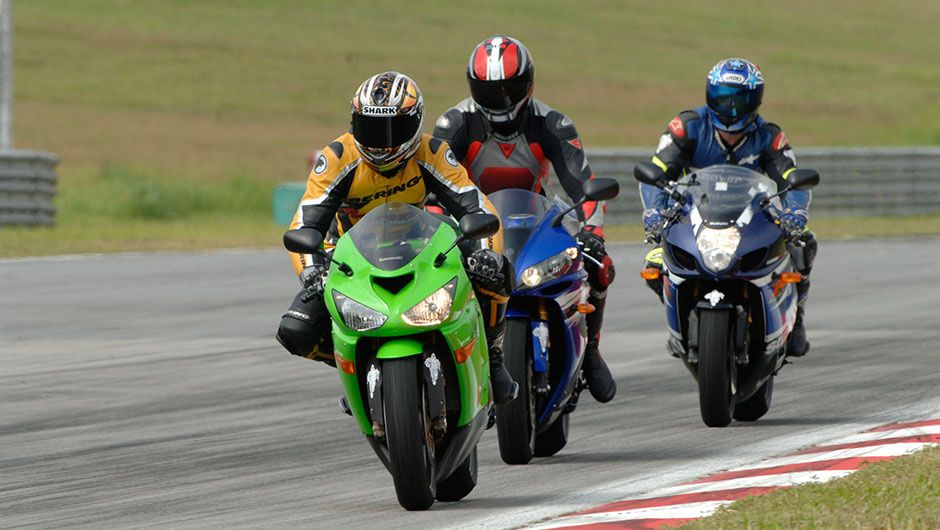
Source
The Catch? Older technology compared to the latest Power 6 or Road 6. Wet grip is decent but not class-leading by today’s standards.
The Silver Lining: Fantastic dry grip and sporty handling at a very attractive price point. Still a very capable and fun tire.
Alternative Option: The Pirelli Diablo Rosso III is often available at competitive prices now that the Rosso IV is out, offering a step up in performance while still being good value.
A performance-oriented dual-compound sport tire delivering precise lean-in, sticky traction, and reliable mileage—perfect for sporty street riding and occasional track use.
- Exceptional grip at all lean angles, right from installation
- Quick warm-up and predictable handling even when cold
- Longevity of 4k–6k miles on the rear and more up front
- Even tread wear and stable, planted cornering feel
- Wears faster than newer generation sport tires
- Some riders note slight squirm at speed on loose pavement
Our Rating 4.7/5: Still a killer value. It leans in smooth, grips better than you’d expect for the price, and doesn’t get weird under pressure. If you ride hard but don’t want to overspend, this is the budget sport tire that still knows how to party.
Shinko 777 Cruiser Tires
Shinko has built a reputation for offering good quality tires at very budget-friendly prices, and the 777 Cruiser tire is a prime example for the cruiser crowd. It’s designed to provide a balance of mileage, stability, and all-weather grip for a wide range of cruiser motorcycles.
Available in many sizes, including whitewall versions for that classic look, the Shinko 777 offers reliable performance for everyday riding and touring without emptying your wallet. While it might not match the ultimate mileage or refined feel of a Metzeler ME888, it’s a solid, dependable option for riders looking for a good value replacement.
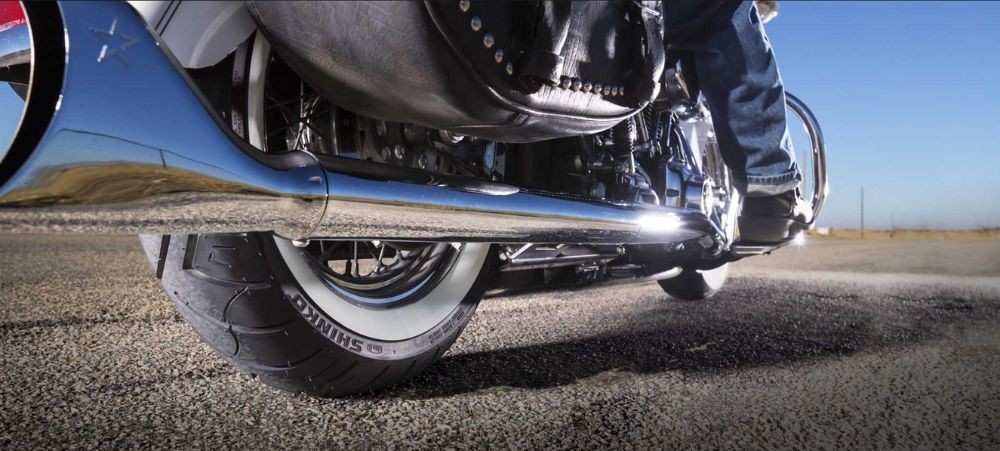
Source
The Catch? May not offer the same outright longevity or wet grip performance as premium cruiser tires. Some riders report a slightly firmer ride.
The Silver Lining: Excellent price point for a new set of cruiser tires. Reliable performance for general cruising and touring. Available in many sizes and styles.
Alternative Option: If you can stretch the budget slightly, the Dunlop D404 is another long-standing value option in the cruiser segment, known for good mileage.
A cruiser tire that balances sticky traction and smooth handling with reliable mileage—perfect for daily cruising and weekend touring.
- Responsive, neutral handling even in curves
- Comfortable ride that absorbs rough roads
- Good wet and dry grip—feels secure in rain
- Long-lasting tread—often reaches 8k–15k miles
- Softer compound wears faster than premium tires
- Some riders report speed wobble at highway pace
Our Rating 4.6/5: The 777s won’t win any tech awards, but they deliver steady grip, solid mileage, and enough comfort to make them a smart choice for cruiser riders logging everyday miles or hitting the road for short tours.
Shinko 804/805 Big Block
For ADV riders looking for aggressive off-road capability on a budget, the Shinko 804 (front) and 805 (rear) Big Block tires are hard to ignore. These tires offer a very knobby, dirt-focused tread pattern (often considered a 40% on-road, 60% off-road tire) that provides excellent traction in mud, sand, and loose gravel.
They are significantly cheaper than premium knobby ADV tires from brands like Continental or Michelin. While on-road manners are compromised (noise, vibration, reduced cornering grip), they are surprisingly capable for an aggressive knobby. A popular choice for riders who prioritize off-road performance but need a tire that won’t break the bank.
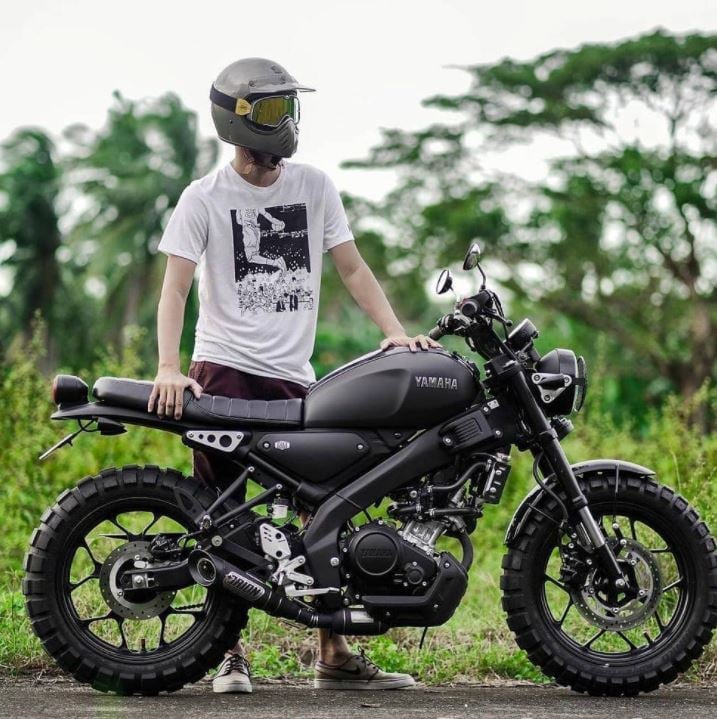
Source
The Catch? Limited on-road grip, especially in the wet. Can wear relatively quickly on pavement due to the soft compound and blocky tread. Noisy.
The Silver Lining: Excellent off-road traction for the price. Aggressive looks. Allows ADV bikes to tackle much more challenging terrain.
Alternative Option: The Kenda K784 Big Block Paver offers a similar value proposition with a slightly different tread pattern.
A rugged 60/40 adventure tire delivering impressive off-road traction and surprisingly stable on‑road manners—great for riders who mix trail days with pavement rides.
- Excellent grip on loose dirt, gravel, and mud
- Stable, confidence‑inspiring handling at highway speeds
- Smooth pavement ride with less noise than full knobbies
- Durable tread—handles aggressive trail braking well
- Sidewall flex can feel mushy in hard corners
- May cup faster if suspension isn’t well tuned
Our Rating 4.5/5: These hit way above their price point. Tons of bite off-road, hold steady on pavement if you’re not pushing too hard, and look the part. If you want real dirt grip without dropping big bucks, these are hard to beat.
Kenda K270 Dual Sport
The Kenda K270 is a classic, budget-friendly dual-sport tire that aims for a true 50/50 balance between street and trail performance. Its tread pattern features knobs that are closer together than a full knobby like the D606, offering a smoother and quieter ride on pavement while still providing decent grip on dirt roads and light trails.
It’s known for being very affordable and offering good longevity for a dual-sport tire. While not a specialist in any one area, its versatility and low cost make it a popular choice for riders who use their dual-sport bikes for a bit of everything, from commuting to exploring fire roads, without wanting to spend a lot on rubber.
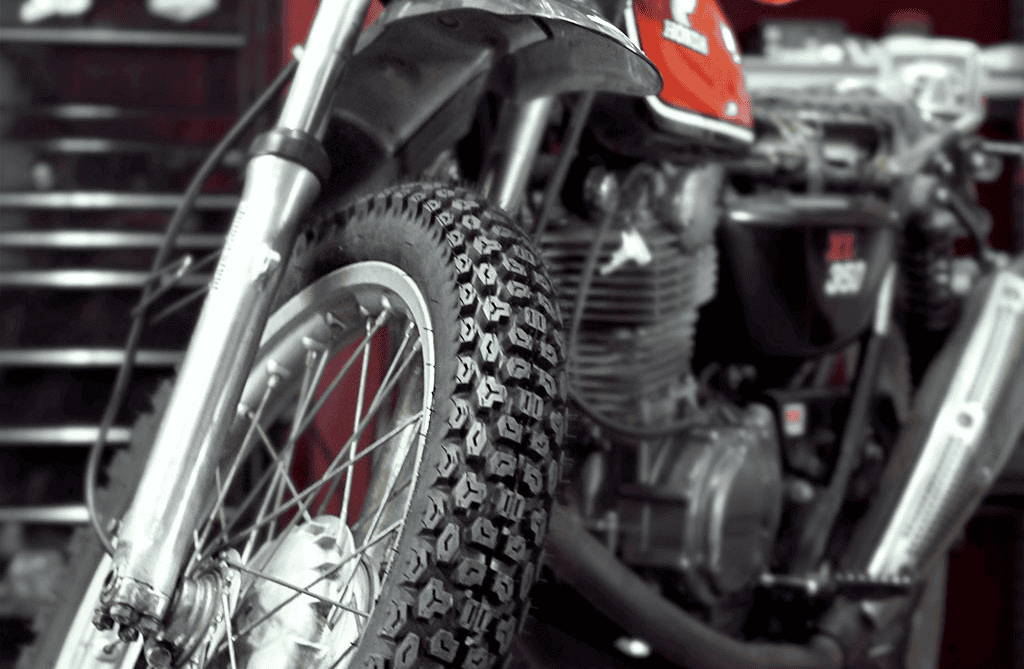
Source
The Catch? Compromised performance at both extremes – not as grippy on technical off-road sections as a true knobby, and not as smooth or grippy on pavement as a street-biased tire.
The Silver Lining: Very affordable, long-lasting for a dual-sport tire, and offers genuine versatility for riders who truly split their time 50/50 between street and mild trails.
Alternative Option: The Shinko 244 Series is very similar in design, performance, and price, often being directly compared to the K270.
A dependable 50/50 dual‑sport tire delivering stable road behavior and confident off‑road grip—great for riders who split time between pavement and trails.
- Excellent balance between street and trail performance
- Durable—often lasts 3k–6k miles with correct pressures
- Secure and predictable feel in loose dirt and gravel
- Smooth, stable ride on pavement despite knobby profile
- Can feel wobbly over 80 mph on highway
- Knobs may wear quicker if ridden aggressively on asphalt
Our Rating 4.1/5: Grips well enough off-road, rolls smooth enough on the street, and doesn’t cost much to replace. If you split your time between pavement and dirt, it’s a no-brainer on a budget.
Comparison Table: Top & Budget Motorcycle Tires
👉 Slide table → to see more ➡️
| Michelin Road 6 | Michelin Anakee Adventure | Dunlop D606 | Michelin Power 6 | Metzeler ME888 Marathon Ultra | Michelin Pilot Power 2CT | Shinko 777 Cruiser Tires | Shinko 804/805 Big Block | Kenda K270 Dual Sport | |
|---|---|---|---|---|---|---|---|---|---|
| Tire Type | Primarily street (Sport Touring) | Mainly street, light off-road (80/20) | Primarily off-road, occasional pavement | High-performance street (Sport) | Heavy-load cruising & touring (Street) | Aggressive street riding (Sport) | Cruising & long-distance touring (Street) | Mixed terrain, off-road focused (60/40) | Balanced dual-sport, on/off-road (50/50) |
| Speed Rating | ZR (149+ mph) | H, V (130–149 mph) | R (106 mph) | ZR (149+ mph) | H, V (130–149 mph) | ZR (149+ mph) | H, V (130–149 mph) | R (106 mph) | P, Q (93–99 mph) |
| Load Index | 58–75 (520–853 lbs) | 54–73 (467–805 lbs) | 54–69 (467–716 lbs) | 58–75 (520–853 lbs) | 54–84 (467–1102 lbs) | 58–75 (520–853 lbs) | 54–84 (467–1102 lbs) | 54–69 (467–716 lbs) | 51–70 (430–739 lbs) |
| Tread Pattern | Water Evergrip™ | Grooved with M+S rating | Aggressive knobby | Sport-oriented | Wide contact patch | Sport-oriented | Large block with siping | Big block pattern | Knobby |
| Rubber Compound | 2CT+ Silica | 2CT / 2CT+ | Off-road optimized | 2CT+ Silica | High-mileage compound | 2CT | Aramid-reinforced | Dual sport compound | Dual-purpose compound |
| Construction Type | Radial | Radial | Bias-ply | Radial | Bias-ply | Radial | Bias-ply / Belted Bias | Bias-ply | Bias-ply |
| Mileage Expectation | ~10% longer than Road 5 (~6,000–10,000 mi) | High (~8,000–10,000 mi) | High (~6,000–8,000 mi) | Moderate (~4,000–6,000 mi) | Very High (~10,000–15,000 mi) | Moderate (~4,000–6,000 mi) | High (~8,000–12,000 mi) | Moderate (~5,000–7,000 mi) | Moderate (~4,000–6,000 mi) |
| Get one | Check price | Check price | Check price | Check price | Check price | Check price | Check price | Check price | Check price |
Notes:
- Speed Rating: Indicates the maximum speed the tire can safely sustain.
- Load Index: Represents the maximum load capacity per tire. The range varies by tire size within each model.
- Mileage Expectation: Actual mileage can vary based on riding conditions, motorcycle type, and maintenance practices.
- DOT Certified: All listed tires are approved by the U.S. Department of Transportation for road use.
Buying Guide: What to Look for in Motorcycle Tires
The right tires make all the difference. Here’s how to pick a set that won’t let you down.
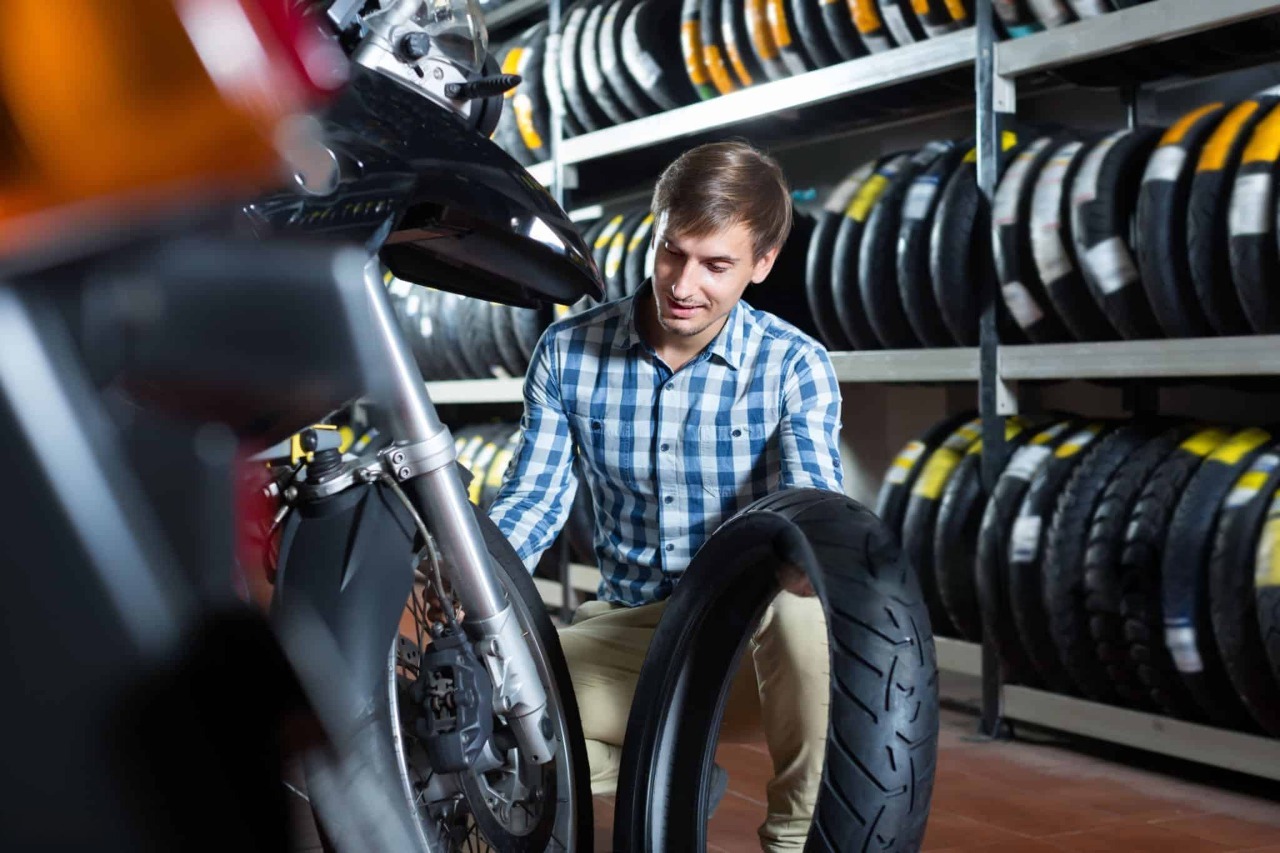
Source
Match the Tire to Your Bike & Riding Style: This is rule number one. Don’t put cruiser tires on a sportbike or race slicks on an adventure bike. Check your owner’s manual for recommended tire sizes and types.
Understand Tire Types:
- Street Tires: Designed for pavement. Sub-categories include Sport/Hypersport (max grip, less mileage), Sport-Touring (balanced grip and mileage, great wet performance), and Cruiser/Touring (high mileage, stability).
- Adventure (ADV) Tires: For mixed on-road and off-road use. Tread patterns vary based on their on/off-road bias (e.g., 80% on/20% off, 50/50).
- Off-Road/Dirt Tires: Aggressive knobby patterns for maximum grip on loose surfaces. DOT-legal versions exist for dual-sports needing street access.
Read the Sidewall: This is crucial for beginners. Key info includes:
- Size: E.g., 120/70ZR-17 (120mm wide, 70% aspect ratio, Z speed rating, Radial, 17-inch rim). MUST match your bike’s requirements.
- Load Index & Speed Rating: Indicates max load and speed the tire can handle.
- Date Code (DOT Code): A four-digit number (e.g., 2523 means manufactured in the 25th week of 2023). Tires older than 5-7 years should generally be replaced, even if they have tread, as rubber degrades.
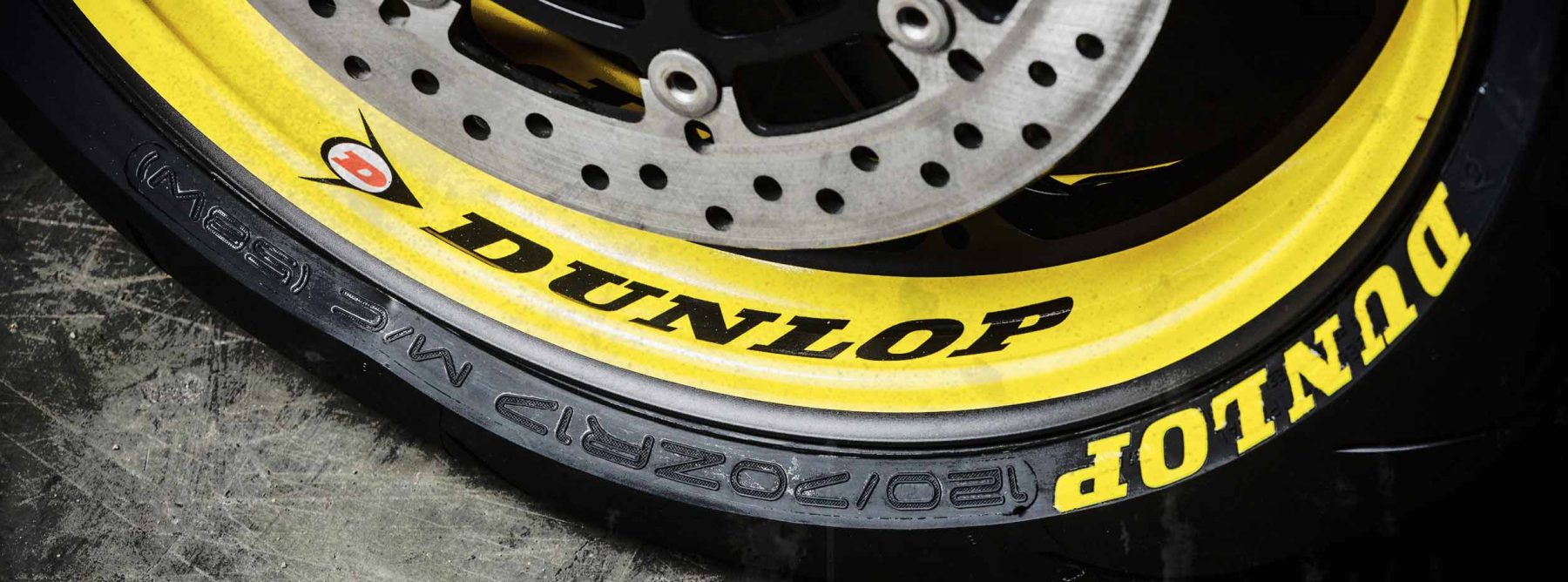
Source
Tread Pattern & Compound:
- Tread Pattern: Affects water evacuation, off-road grip, and stability.
- Compound: Softer compounds offer more grip but wear faster. Harder compounds last longer but offer less ultimate grip. Many modern tires use dual or multi-compounds for optimized grip and wear.
Bias-Ply vs. Radial: Most modern street bikes use radial tires for better performance at speed and heat dissipation. Older bikes or some cruisers might use bias-ply. Generally, don’t mix them unless specified as compatible by manufacturers.
Mileage vs. Grip: It’s almost always a trade-off. Decide what’s more important for your needs. Sport-touring tires offer the best compromise for most street riders.
Wet Weather Performance: If you ride in the rain or live in a wet climate, prioritize tires with excellent wet grip ratings and tread patterns designed for water displacement (often featuring silica-rich compounds).
When to Replace: Don’t wait until they’re bald! Replace tires when they reach the tread wear indicator bars, show signs of damage (cuts, punctures, bulges), squaring off (flat center from highway riding), or are too old (check date code).
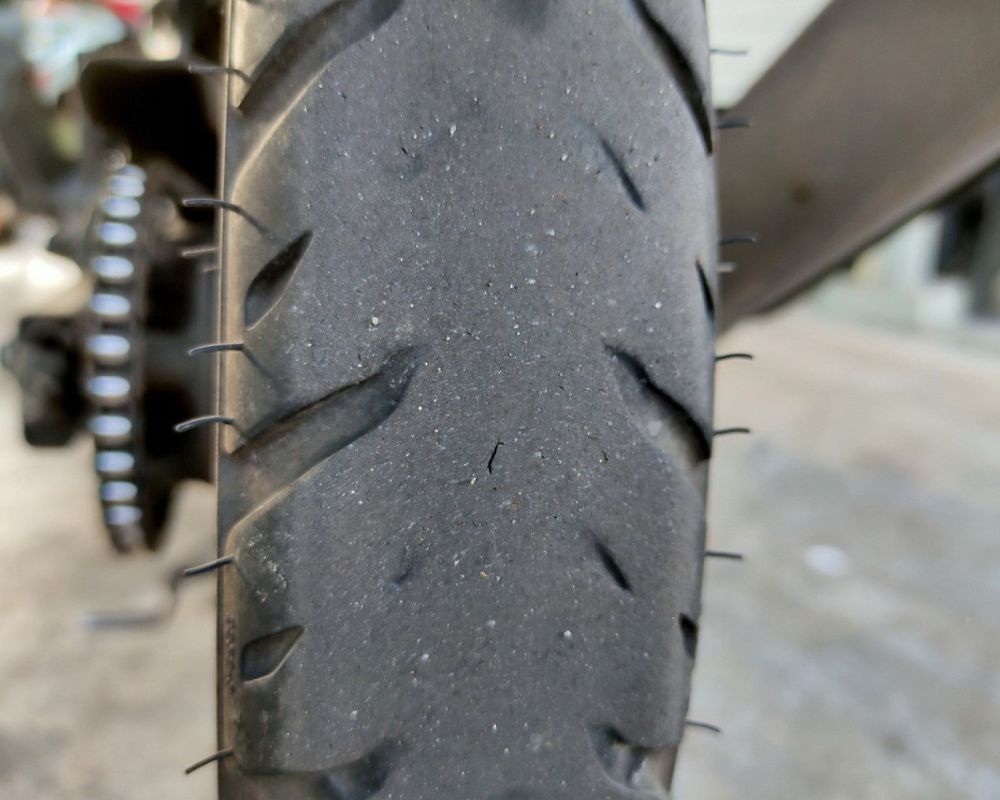
Source
FAQ: Motorcycle Tires
Got questions about wear, safety, or sizing? We’ve got straight answers to the most common tire concerns. Whether you’re a weekend rider or a daily commuter, this section clears up what you need to know.
How often should I replace my motorcycle tires?
Based on wear (reaching tread wear indicators) or age (typically 5-7 years from manufacture date, regardless of tread depth, as rubber degrades). Also, replace immediately if damaged.
Can I mix different tire brands or models on my motorcycle?
It’s generally best to use a matched set (front and rear) as designed by the manufacturer for optimal handling. If you must mix, consult a tire professional. Avoid mixing bias-ply and radial unless explicitly approved.
Do new motorcycle tires need a break-in period?
Yes. New tires have a slick surface from mold-release compounds used in manufacturing. Take it easy for the first 50-100 miles, avoiding hard acceleration, braking, and extreme lean angles to gently scuff them in and get used to their feel.
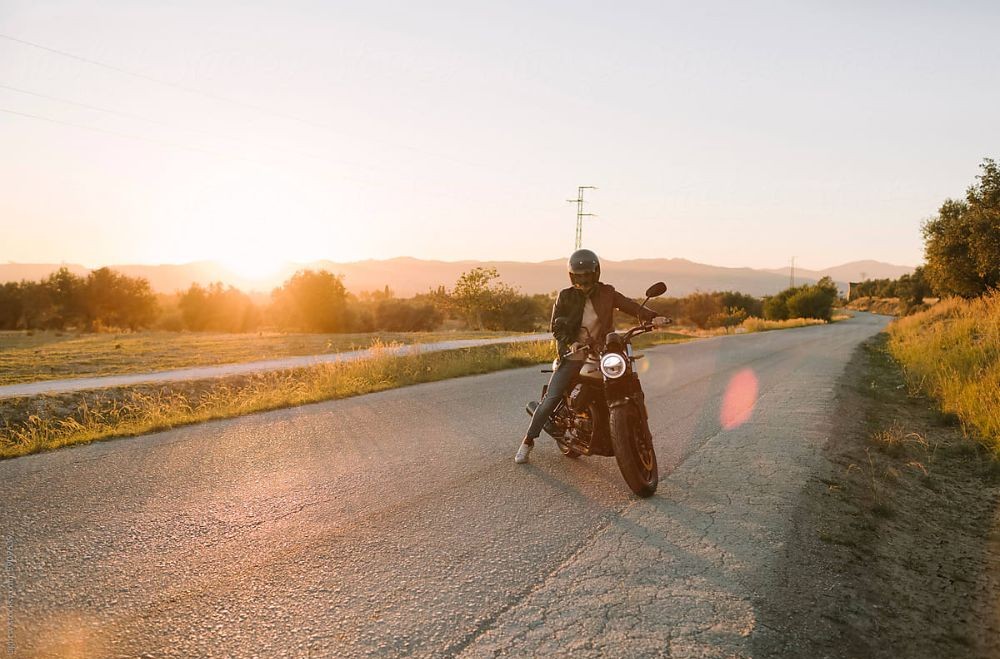
Source
How important is motorcycle tire pressure?
Critically important. Check pressures regularly (when cold) and maintain them according to your bike manufacturer’s recommendations (usually found on a sticker on the swingarm or in the owner’s manual). Incorrect pressure affects handling, grip, tire life, and safety.
What do all the numbers and letters on the tire sidewall mean?
They indicate tire size (width, aspect ratio, rim diameter), construction type (radial/bias-ply), speed rating, load index, date of manufacture (DOT code), and sometimes specific fitments (e.g., for certain bike models). Learning to read them is essential.
Wrapping Up…
Your motorcycle tires are your bike’s only connection to the earth, doing an incredible amount of work every time you ride. Choosing the right set for your bike and riding style is one of the most impactful upgrades you can make for both performance and safety.
For more deep dives into bike components and gear, check out our other motorcycle parts and accessories guides.
Related
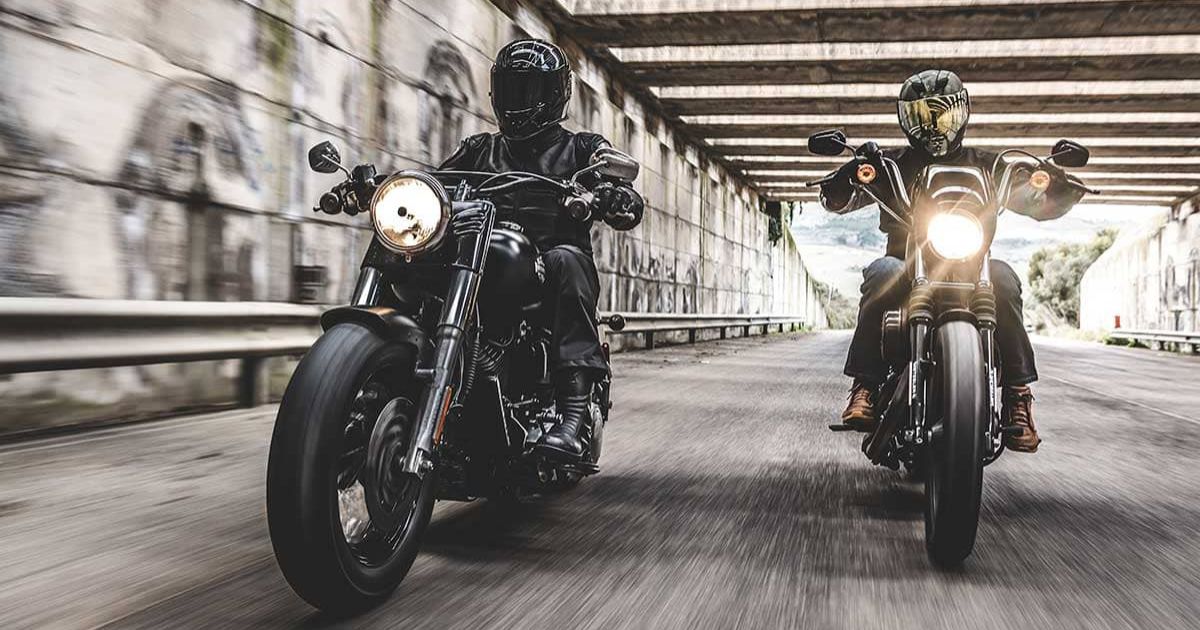
Best Cruiser Tires for Motorcycle Riders in 2025
Discover the best cruiser tires of 2025 for riders—tested for grip, comfort, mileage, and style to keep your V-Twin planted and confident.

